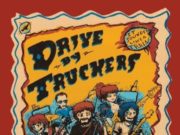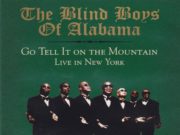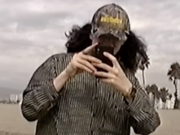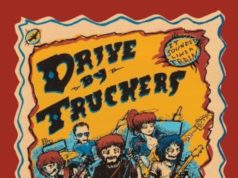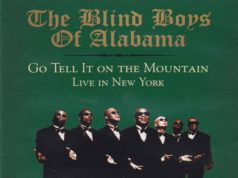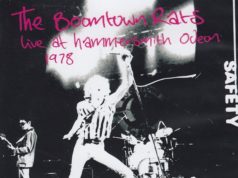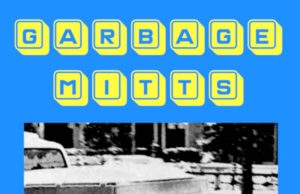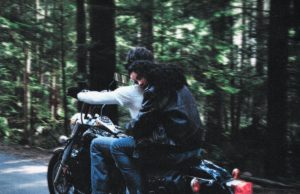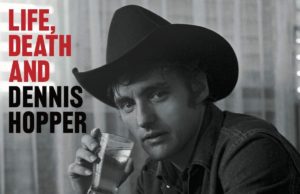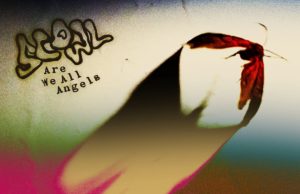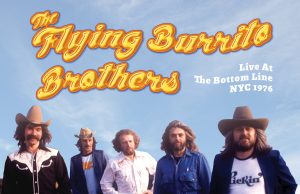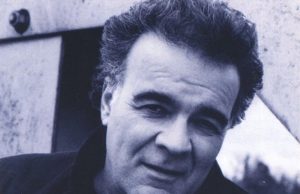 If there’s one thing which makes me both cringe and laugh, it’s the use of the word “tone” by musicians. I suppose the latter reaction is the result of Instagram account Rigsofdad — which has the added bonus of being a mechanism for us middle-age recording artists to keep from being embarrassing. It’s a guide, a cautionary tale. If you ever find yourself looking or sounding like any of the people in the satirical social media account — stop.
If there’s one thing which makes me both cringe and laugh, it’s the use of the word “tone” by musicians. I suppose the latter reaction is the result of Instagram account Rigsofdad — which has the added bonus of being a mechanism for us middle-age recording artists to keep from being embarrassing. It’s a guide, a cautionary tale. If you ever find yourself looking or sounding like any of the people in the satirical social media account — stop.
At the top of this heap of pretentious wordage is “tone.” The word is basically ruined for me. I can’t use it to describe the guitar sound on albums or from amps or a particular characteristic of a player’s style. It’s a soiled word, like the names Karen and Donald — nobody with any sense should use them anymore. They’re so tainted that there’s even a fake news story out there claiming that the name Karen hasn’t been given to a baby girl in Canada since Nov. 13, 2019.
But I’m going to give tone one last shot, by going back to when it all began — the golden era of tone and those awesome surf and spy guitar instrumentals of the late ’50s and early 1960s. Back then, the word used was “twang” — especially by guitarist Duane Eddy, who used it in most of his album titles. For example: Have Twangy Guitar Will Travel, The Twang’s The Thang, Twistin’ ‘N’ Twangin’, Twangy Guitar Silky Strings, Twangin’ Up A Storm, Twangin’ The Golden Hits, Twangsville, The Roaring Twangies and The Biggest Twang of All. Eddy actually had a hit when I was in middle school in the ’80s, courtesy of Art Of Noise and their 1986 version of the Peter Gunn Theme, which he originally did back in 1959. Eddy is 85 years old and only stopped touring in 2018.
Another key track from the era is Raunchy by Bill Justis. The 1957 track inadvertently landed George Harrison the job of lead guitarist in The Beatles. Paul McCartney boasted to John Lennon that the 14-year-old Harrison could play Raunchy perfectly — and was made to do so during his Quarrymen audition on the upper level of a Liverpool bus in 1958.
That same year, Link Wray demonstrated you don’t need to have lyrics to get your song banned on certain American radio stations. Rumble was indeed banned in both New York and Boston for fear it would incite teenage riots. Rumble was the first song to employ fuzz guitar and power chords — done before the advent of pedals by Wray simply shoving a pen into the tweeters of his amplifier. It would be six years before Kinks guitarist Dave Davies made the sound even more famous by slicing the cone of his amp speaker with a razor blade, and then poking holes in it with a pin, to get his guitar sound on You Really Got Me.
Guitarist Dick Dale invented the “surf sound” when he released the song Let’s Go Trippin’ in 1961. His 1962 version of the Eastern Mediterranean folk song Miserlou (originally called Misirlou) thrust him into rock ’n’ roll immortality — especially when Quentin Tarantino used it as the theme of his 1994 blockbuster Pulp Fiction. The original below is pretty different than Dale’s version at the top of this column (complete with zombie-esque backing band):
Cool thing about Dale: He was left-handed, so he flipped his Stratocaster upside-down to play it. But unlike Jimi Hendrix, he didn’t re-string it. Part of his sound came from having the big strings on the bottom. Watch that video above again — it’s bonkers.
Apart from Dale’s unique setup, there actually was a technique to this surf/spy twangy guitar style — work in more bends, hammer-ons, and get comfortable with the tremolo bar, which you should use to accent with the drums. If you use a Stratocaster or something else with three pickups, set it for the bridge and middle pickup combination, then run it through the clean channel of your amp with the treble about 7-9, bass 3-5, and the mid just barely on. Turn the master volume all the way up, and then turn the clean channel volume up to the level you want. I also like drop-D tuning for this.
Then play along with your favourites (I’ve included a handy playlist below) or try converting standards for use as guitar instrumentals — like Dale did with Miserlou (Misirlou) and Johnny & The Hurricanes did with Red River Rock (Red River Valley). Not to overlook this much later example: The incredible version of Patsy Cline’s Sweet Dreams by Roy Buchanan on his 1972 debut album.
A lot of the songs from the surf/spy era are kind of similar. Kind of reminds me of how April Wine demonstrated this on their 1979 track I Like To Rock. During the song’s outro, they combined the main riff with the ones from Day Tripper by The Beatles and Satisfaction by The Rolling Stones. They merge together in a really cool way, and must have been super fun for the three-guitar lineup to play.
Three others which might actually meld together nicely are Neil Hefti’s Batman Theme (1966), John Barry’s James Bond Theme (1962) and Henry Mancini’s A Shot In The Dark (later used as The Inspector theme during the Pink Panther animated series).
I would be remiss in not mentioning The Ventures, who made a career of twangy guitar instrumentals — especially their covers of standards. I am particularly proud of my copies of The Ventures In Space (so cool) and The Ventures Christmas Album, which I reviewed last year HERE.
There are also plenty of songs which have this guitar sound but aren’t instrumentals — such as Heart Full Of Soul by The Yardbirds and Planet Claire by The B-52’s. And if you dig Planet Claire, you gotta hear Bert Weedon:
Weedon, who died a little more than a decade ago, was the first British guitarist to have a hit record in the singles charts. Guitar Boogie Shuffle went to No. 10 in 1959. One could argue he is the most influential guitar player of the modern era — having been named as a key “teacher” by Eric Clapton, Pete Townshend, John Lennon, Paul McCartney and Brian May.
If you dig the heavier stuff, The Cramps, Ministry and certainly The Bomboras owe a debt to The Original Surfaris. Get a load of this 1962 banger, which sat on a shelf unreleased until 1995:
This track was inspired by the popularity of Wipe Out by the similarly named combo The Surfaris, but also The Chantays’ classic Pipeline.
You’ll find these on my playlist — crank it.
• • •
Area Resident is an Ottawa-based journalist, recording artist, music collector and re-seller. Hear (and buy) his music on Bandcamp, email him HERE, follow him on Instagram and check him out on Discogs.





